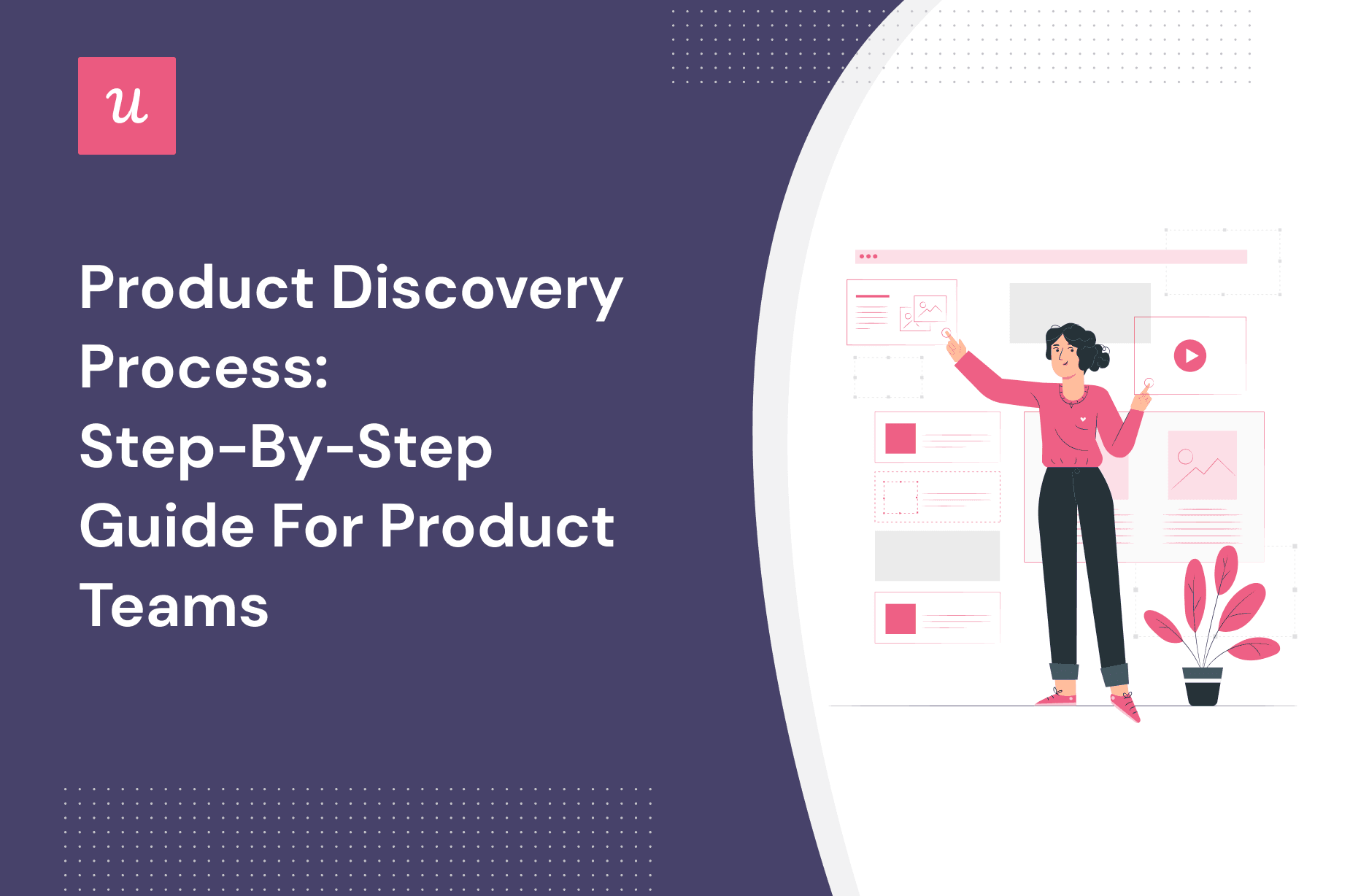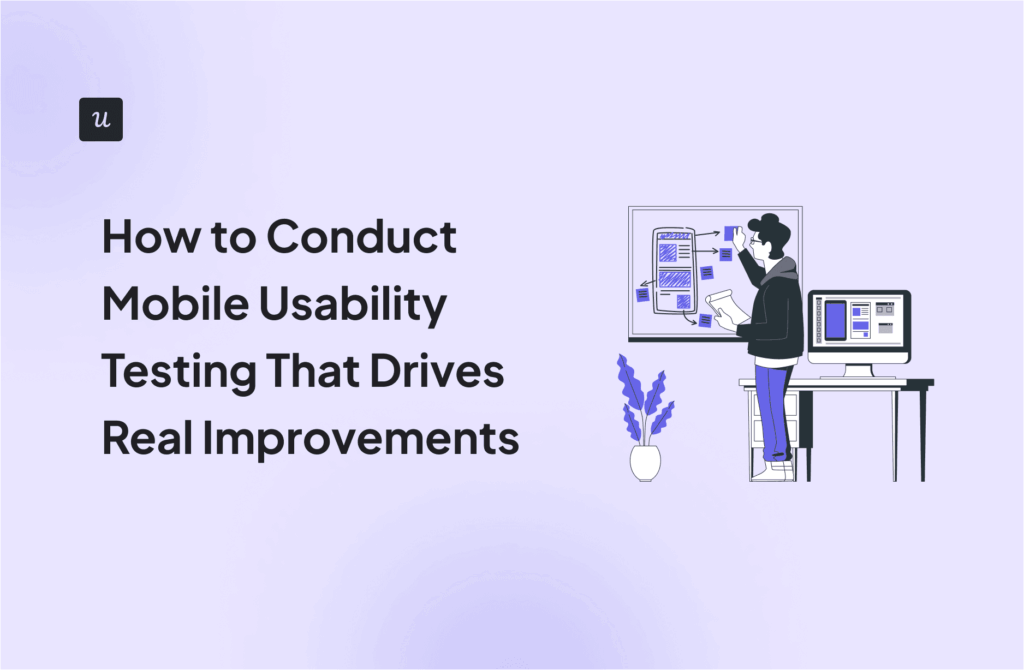
Product Discovery Process: Step-By-Step Guide for Product Teams
How can product teams leverage the product discovery process to create products that satisfy genuine user needs?
This article explores every stage of the process and shares some of the best practices that will help product managers deliver delightful user experiences!
Let’s get right to it!
Get The Insights!
The fastest way to learn about Product Growth, Management & Trends.
What is the product discovery process?
Product discovery is the process in which product teams identify user problems and develop products that address them.
The goal of the entire process is to discover customer problems that are not solved by other products on the market but are significant enough that potential users would be ready to pay for them.
Once that’s done, the team iterates to develop solutions to those problems.
Initial vs. continuous product discovery
Initial product discovery is the first stage of the product development journey which focuses on identifying potential ideas for new products.
During this stage, the product team conducts market research, competitive analysis, and customer interviews. This is essential to identify product concepts that stand a chance in the market.
Continuous discovery is an ongoing process that happens throughout the product’s lifecycle.
It involves continuously gathering feedback, insights, and data from customers, users, and stakeholders to improve and innovate the product. Its focus is on continuous learning and adapting the product to stay on top of the changes in customer needs and the competitive landscape.

Why should PMs focus on product discovery in the product development process?
Product discovery is an essential part of the product management process.
First, it helps mitigate the risk involved in developing the product.
It reduces the risk that customers won’t actually need it (value risk), won’t be able to figure out how to use it (usability risk), won’t be aligned with your business goals (business viability risk), and you won’t have the resources to build it (feasibility risk).
Second, it helps PMs avoid the feature factory mindset or falling into the build trap. That’s because they focus on customer problems to solve and not developing features for their own sake.
Third, it improves resource optimization and reduces the time to market. That’s because less time or money is wasted on initiatives that are bound to fail.
Finally, product discovery helps align teams and stakeholders from across the organization. If product decisions are based on solid foundations, it’s more difficult to undermine them in favor of somebody’s pet projects.
What are the steps of the product discovery process?
The product discovery process consists of 7 key stages:
- Build the product discovery team
- Conduct user research
- Identify common problems
- Prioritize opportunities
- Carry out product ideation
- Validate product/feature ideas
- Develop prototypes and test them
While we explore these steps, it’s important to remember that this isn’t always a linear process. Many of the activities happen at the same time and consist of mini feedback loops and iterations.
Step 1: Set the team responsible for product discovery
Product discovery teams normally consist of:
- Product manager
- UX designer
- A member of the development team
Sometimes, the team could also benefit from the help of a researcher, data scientist, or analyst.
Having all the experts on board enables the team to collect valid data and analyze it competently to make informed decisions and design solutions that are feasible and viable, and aligned with the findings of the research.
Step 2: Conduct user research to identify their pain points
At this stage, the team conducts user research to inform the rest of the process. Some product research techniques include customer feedback surveys, customer interviews, and product usage analysis.
Customer feedback surveys
Customer feedback surveys are a staple of continuous product discovery and iterative product development because they allow product teams to collect valuable insights at scale.
The surveys come in different shapes and forms:
- In-app or email survey to capture user sentiment
- Contextual in-app survey to evaluate feature performance
- Passive feedback form so that users can give on-demand feedback
- Feature-request widget or a public-facing product roadmap to collect customer input

Customer interviews
Customer interviews are one of the most popular product discovery methods.
They allow you to collect qualitative feedback from a target audience you wouldn’t be able to capture through surveys. That’s because they offer you a lot of flexibility to explore ideas that participants bring up, but you hadn’t thought of before.
The flexibility doesn’t mean you can freestyle your way through the interview. For them to be productive and worth the time they take, be sure to set clear goals you want to achieve and prepare thoroughly.
Teressa Torres recommends scheduling regular user interviews even when you think you’ve already nailed your PMF. In this way, you can stay on top of the changes in customer and market needs and always have interviewees ready to explore new ideas.

Product analytics
Product analytics give you objective insights into user behavior inside the product.
By analyzing session recordings, or funnel conversions, you can identify new user pain points that need resolving.

Step 3: Find themes and identify common problems
This product discovery stage involves analyzing the data and customer insights you gathered in the research phase to identify common patterns.
The ultimate purpose of this step is to identify opportunities to improve the product and deliver a better user experience. These could be user problems, needs, or desires.
Step 4: Prioritize your opportunities
As a product manager, you can’t solve all user problems.
For starters, some of them are simply not in line with the product vision. An Opportunity Solution Tree (OST) is a useful tool that can help you map out all the user pain points and needs and see clearly how they align with the business objectives.
Once you do that, the odds are that you will still have more problems to solve than you can possibly do.
That’s why product teams spend a fair bit of their time prioritizing the opportunities. They normally do it using a framework, like the Kano Model, Cost of Delay, or Dot-voting to name just a few.

Step 5: Brainstorm possible solutions
Once you have prioritized the opportunities, it’s time to move to the solution space and generate ideas.
Again, there are plenty of techniques that you can use during the ideation stage, like story mapping, brainstorming, and mind mapping.
At this stage, it’s important not to forget that discovery is an actual team effort. By involving all stakeholders, you can lean into their diverse expertise and unique perspectives. This will help you generate more innovative ideas, allow a more accurate feasibility assessment, and increase ownership.
With tools like Miro, ideation sessions are easy to conduct, even for dispersed teams, so there’s no reason to exclude anyone.

Step 6: Validate the product and feature ideas
As you are brainstorming the product or feature ideas, you should be continuously validating them without investing excessive amounts of time or money, using techniques like fake door testing.
Let’s look at a hypothetical Asana example we’ve mocked up for you to see how it works.
To validate the Goals feature idea, we could simply add it to the menu and attract user attention with a tooltip. The user engagement with the feature would indicate how interesting they find it.

Of course, once the user clicks on the feature, they will figure out something is off, so you will have to explain what you’ve just done and why, like in the modal below.

Step 7: Create and test prototypes before the final product development
Fake door testing is a kind of prototype testing. In this case, the prototype is extremely simple and doesn’t require much developer time. Apart from the menu change and a couple of in-app messages, you don’t have to create anything else.
However, if the idea passes the test, it’s time to develop more advanced prototypes.
Prototype testing is an iterative process. You start with simple prototypes like wireframes. You use feedback from your customers to improve it and build higher-fidelity prototypes.
Gradually, what used to be just a product idea is turning into a fully functional MVP (Minimum Viable Product). That’s why we can say that prototype testing marks the beginning of the product delivery process.

How do you actually test the prototypes?
There are plenty of options. For low-fidelity prototypes, these could be user interviews or focus groups. Once the prototypes get more advanced, you could use usability testing techniques like guerilla testing or 5-second tests.
Just before you launch your MVP, beta testing allows you to test the product or feature with real users in their own environments. And while they’re taking the product for a spin, you use product analytics, surveys, and interviews to collect further insights to improve the product.

The best product discovery tools for SaaS companies
What tools do you need to support your product discovery process?
Let’s check out a few options that are worth exploring.
Userpilot – for researching user needs and testing ideas
Userpilot is a product growth platform with powerful feedback and analytics functionality. Thanks to its engagement layer, you can also communicate with your users easily.
What features exactly does Userpilot offer?
- In-app surveys – to collect customer feedback.
- Feedback widget – to collect on-demand feedback and customer requests.

- Feature tagging – to track feature usage
- Event analytics, including custom events
- User segmentation
- A/B testing

- UI patterns for in-app messaging (tooltips, modals, slideouts, banners, hotspots, and driven actions) – to conduct fake door tests or recruit beta testers.
Hotjar – for viewing sessions recordings
Hotjar is an analytics and feedback platform that allows you to gather granular user insights.
Its flagship features include:
- Heatmaps – to visualize user interactions with your UI elements
- Session recordings – to replay how individual users interact with the product
- Polls – to collect user feedback.

Figma – for creating product prototypes
Figma is a collaborative design tool used by product designers and UI/UX designers to create prototypes and iterate on digital designs for websites, web and mobile apps, and other digital products.
As a cloud-based platform that allows real-time collaboration, it enables product development teams to work together on design projects.

Conclusion
The product discovery process is a vital part of product development. It is essential to develop products that satisfy actual market and customer needs and give them joy.
If you want to see how Userpilot can help you with your product discovery efforts, book the demo!






